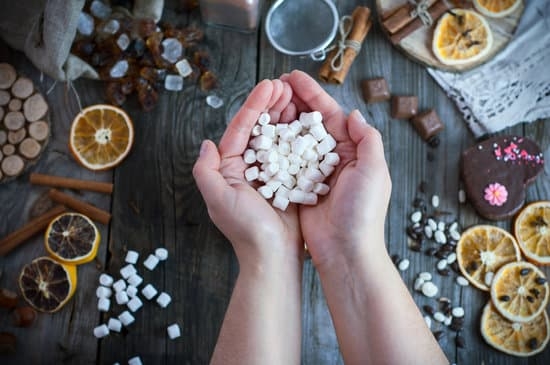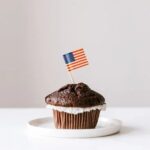What flowers to use for cake decorating is a common question among baking enthusiasts looking to add a touch of elegance and beauty to their creations. Edible flowers have become increasingly popular in the world of cake decorating, offering a unique and stunning way to adorn cakes for special occasions. From delicate roses to vibrant pansies, the possibilities are endless when it comes to incorporating edible blooms into your cake designs.
The significance of choosing the right flowers for cake decoration goes beyond just aesthetics. It’s essential to consider not only the visual appeal but also the flavors and textures of the flowers you use. Understanding how different flowers can enhance the taste and overall presentation of your cakes is key to creating show-stopping desserts that will delight both the eyes and taste buds of your guests.
In this article, we will delve into the types of edible flowers commonly used in cake decorating, as well as provide insights into sourcing, preparing, and arranging these blooms on cakes. Whether you’re looking to elevate your cake decorating skills or simply add a whimsical touch to your baked creations, using beautiful edible flowers is sure to take your cakes to the next level.
Stay tuned as we explore creative ways to incorporate these natural beauties into your cake designs and learn best practices for achieving visually stunning effects with edible blooms.
The Significance of Choosing the Right Flowers for Cake Decoration
When it comes to cake decorating, the choice of flowers plays a crucial role in enhancing the overall aesthetic appeal of the cake. The selection of the right flowers can elevate a simple cake design to an extraordinary work of art. It is essential to consider not only the visual appeal but also the flavor compatibility and safety aspects when choosing flowers for cake decoration.
Using edible flowers for cake decoration adds a touch of elegance and sophistication. However, it is important to ensure that the flowers you choose are safe for consumption and free from pesticides or other harmful chemicals. Popular edible flowers that are commonly used in cake decorating include roses, calendula, lavender, pansies, violets, and chamomile. These flowers not only look beautiful but also offer a variety of flavors and fragrances that can enhance the taste of your cake.
To ensure that your floral cake decorations are both visually appealing and safe to eat, it is important to source your flowers from reputable suppliers who specialize in edible blooms. You can also consider growing your own edible flowers in a pesticide-free environment to guarantee their safety and freshness.
Properly preparing the flowers by removing any green parts or stems before placing them on the cake is essential to avoid any potential health risks. Remember, the right choice of flowers can take your cake decorating skills to the next level and leave a lasting impression on everyone who tastes your creations.
| Edible Flowers | Commonly Used in Cake Decorating |
|---|---|
| Roses | Known for their delicate flavor and romantic appearance |
| Lavender | Offers a unique floral scent and flavor profile |
| Pansies | Add vibrant colors and a slightly minty taste to cakes |
Types of Edible Flowers Commonly Used in Cake Decorating
When it comes to cake decorating, choosing the right edible flowers can make all the difference in enhancing the overall look and taste of your creation. There are several types of edible flowers that are commonly used in cake decoration, each offering a unique flavor profile and visual appeal. Some of the most popular edible flowers used for cake decorating include roses, lavender, violets, pansies, and chamomile.
Roses are a classic choice for cake decorating due to their delicate fragrance and romantic appearance. Lavender is another favorite among bakers for its aromatic flavor that adds a subtle floral note to cakes. Violets and pansies come in a variety of vibrant colors, making them perfect for adding a pop of brightness to any cake design. Chamomile flowers are known for their calming properties and can provide a soothing element to your cake decorations.
Incorporating these edible flowers into your cake designs not only adds beauty but also allows you to experiment with different flavors and textures. It’s essential to choose fresh, organic flowers that have not been treated with any chemicals or pesticides.
Before using them on your cakes, make sure to wash the flowers thoroughly and remove any stems or leaves that are not edible. With the right selection and preparation, you can elevate your cake decorating skills by knowing what flowers to use for cake decorating.
| Edible Flower | Flavor Profile |
|---|---|
| Roses | Delicate fragrance and romantic appearance |
| Lavender | Aromatic flavor adding a subtle floral note |
| Violets & Pansies | Vibrant colors perfect for brightening up cakes |
| Chamomile | Calming properties providing a soothing element |
Understanding the Flavors and Textures of Different Flowers for Cakes
When it comes to cake decorating, choosing the right flowers is not just about their appearance but also about their flavors and textures. Different flowers can add unique tastes and mouthfeel to your cakes, enhancing the overall culinary experience for those enjoying your creations. Understanding the flavors and textures of various edible flowers can help you create a harmonious and delicious dessert that delights both the eyes and taste buds.
One popular choice for cake decorating is using lavender flowers. Lavender has a sweet, floral flavor with citrus notes, adding a subtle yet fragrant taste to cakes. Its delicate petals also provide a soft texture that can be appealing in both decorative elements and as actual ingredients in your baked goods.
Roses are another classic flower used in cake decoration, offering a romantic flavor profile with hints of honey and fruity undertones. The velvety texture of rose petals can bring a luxurious touch to your cakes.
For those looking to add a touch of freshness to their cakes, consider using edible pansies. Pansies have a mild, slightly grassy flavor that complements a wide range of dessert recipes. Their delicate texture makes them perfect for garnishing or incorporating into fillings or toppings.
By experimenting with different flowers, you can discover unique flavor combinations and textures that elevate your cake decorating skills to new heights. So next time you’re deciding on what flowers to use for cake decorating, don’t forget to consider not just their visual appeal but also how they can enhance the taste and feel of your creations.
Tips for Sourcing and Preparing Edible Flowers for Cake Decoration
When it comes to using flowers for cake decorating, the first step is to ensure that you are selecting the right type of edible flowers that are safe for consumption. Not all flowers are edible, and some may even be toxic, so it is crucial to do your research before adding them to your cakes. Many florists offer edible flowers specifically grown for culinary use, or you can consider growing your own in a pesticide-free environment.
Sourcing Edible Flowers
When sourcing edible flowers for cake decoration, make sure to purchase them from reputable sources that guarantee they are safe for consumption. Farmers markets, specialty grocery stores, or online suppliers are good places to start looking for a variety of edible blooms. If you are picking flowers from your garden or the wild, always double-check their identity and ensure they have not been treated with any chemicals.
Preparing Edible Flowers
Before using edible flowers on your cakes, it is essential to properly clean and prepare them. Gently wash the flowers in cold water and allow them to air dry on paper towels. Remove any pistils, stamens, or sepals as they might have a bitter taste or an unpleasant texture.
It’s also recommended to refrigerate the prepared flowers until you are ready to decorate your cake to keep them fresh and vibrant. By taking these steps in sourcing and preparing edible flowers properly, you can elevate the visual appeal of your cakes while ensuring safety for consumption.
Creative Ways to Incorporate Flowers Into Cake Designs
Using Fresh Flowers as Toppers
One of the simplest and most elegant ways to incorporate flowers into cake designs is by using fresh flowers as cake toppers. Selecting blooms that complement the flavor and design of the cake can add a touch of sophistication and natural beauty. It is essential to ensure that these flowers are food-safe, organic, and free from pesticides before using them for decoration. Popular choices for this type of decoration include roses, pansies, violets, and lavender.
Creating Floral Patterns or Borders
For those looking to take their floral cake decorating skills up a notch, creating intricate floral patterns or borders on cakes can be a stunning option. Using edible flowers such as daisies, calendulas, or chamomile can help achieve a whimsical and romantic look. Paired with some greenery like mint leaves or rosemary sprigs, these floral designs can transform an ordinary cake into a work of art.
Making Flower Petal Confetti
Another creative way to incorporate flowers into cake designs is by making flower petal confetti to sprinkle over cakes. This delicate touch adds texture, color, and fragrance to the overall presentation. Roses, marigolds, and nasturtiums are popular choices for creating flower petal confetti due to their vibrant colors and pleasant scents. Simply pick the petals off the blooms and scatter them over the frosted surface of the cake for a whimsical effect.
By exploring these creative ways to include flowers in cake designs, you can elevate your baking skills and create visually stunning masterpieces that not only taste delicious but also look exquisite. Remember always to choose edible flowers that are safe for consumption and enhance the overall aesthetics of your cakes while experimenting with different techniques for incorporating nature’s beauty into your creations.
Best Practices for Arranging Flowers on Cakes for a Visually Stunning Effect
When it comes to cake decorating, the way you arrange flowers can make a significant impact on the overall look of your creation. Whether you’re going for a rustic, elegant, or whimsical design, knowing how to arrange flowers on cakes can truly elevate the visual appeal of your dessert masterpiece. Here are some best practices to consider when arranging flowers for a visually stunning effect:
- Choose the right size and color: Consider the size and color of the flowers in relation to the size and design of your cake. Opt for smaller flowers for mini cakes or cupcakes, while larger blooms work well for tiered cakes.
- Balance and symmetry: Create a balanced arrangement by placing an odd number of flowers around the cake. Aim for symmetry by distributing flowers evenly on all sides or clustering them in a strategic pattern.
- Varying heights and angles: Add dimension and depth to your design by placing some flowers at different heights or angles. This creates visual interest and prevents the arrangement from looking flat.
Using these best practices will ensure that your floral cake decorations not only look visually stunning but also harmonize with the overall theme and style of your cake. The key is to experiment with different arrangements until you find one that complements your cake design perfectly.
Remember that practice makes perfect – don’t be afraid to try out new techniques and styles when arranging flowers on cakes. With patience and creativity, you’ll soon discover the magic of using beautiful edible flowers to enhance your cake decorating skills.
Safety Precautions and Considerations When Using Flowers for Cake Decorating
When incorporating flowers into cake decorating, it is essential to prioritize safety precautions and consider various factors to ensure the flowers are safe for consumption. By following some best practices, you can enhance your cake designs while keeping both visual appeal and food safety in mind.
- Choose organic or pesticide-free flowers: When selecting flowers for cake decoration, opt for organic varieties or those labeled as pesticide-free. This helps to minimize exposure to potentially harmful chemicals that could be present on non-organic flowers.
- Wash and prep flowers properly: Before using any flowers on a cake, make sure to wash them thoroughly with water to remove dirt, insects, or residues. Trim the stems and remove any pistils or stamens that may affect the taste or appearance of the flowers.
- Identify edible varieties: Not all flowers are safe for consumption, so it’s crucial to use only edible blooms when decorating cakes. Some common edible flowers used in cake decorating include roses, violets, lavender, calendula, and pansies.
In addition to these precautions, it is vital to consider potential allergies when using flowers for cake decoration. Be sure to inform consumers about the presence of edible flowers on the cake if serving it at an event where guests may have allergies. By taking these safety measures into account, you can confidently use beautiful edible flowers in your cake designs without compromising anyone’s health or well-being.
Elevating Your Cake Decorating Skills With Edible Flowers
Now that we have discussed the safety precautions and considerations when using flowers for cake decorating, you are equipped with the knowledge needed to elevate your creations with stunning floral designs. By carefully selecting organic and edible varieties, washing and prepping them properly, and being mindful of potential allergies, you can confidently use a variety of beautiful blooms in your cake decorations.
Remember that not only do edible flowers add visual appeal to your cakes but also introduce unique flavors and textures that can enhance the overall taste experience for those enjoying your creations.
Conclusion
In conclusion, the use of edible flowers in cake decorating adds a touch of elegance and sophistication to any sweet creation. By carefully selecting the right flowers for your cakes, you can enhance not only the visual appeal but also introduce interesting flavors and textures to delight your taste buds. Whether you opt for vibrant pansies, delicate roses, or fragrant lavender, each flower brings its unique charm to the cake decorating process.
When considering what flowers to use for cake decorating, it is essential to think about both aesthetics and taste. Some flowers may have a more subtle flavor profile that complements the sweetness of the cake, while others may add a refreshing zing or herbal notes. Understanding how different flowers interact with various cake flavors can help you craft a harmonious and delectable dessert for any occasion.
Incorporating edible flowers into your cake designs not only showcases your creativity but also allows you to personalize your creations with nature’s beauty. With proper sourcing, preparation, and arrangement techniques, you can elevate your cake decorating skills to new heights. So next time you venture into the world of floral-inspired cakes, don’t hesitate to explore the vast array of edible blooms available and let your imagination run wild with possibilities.
Frequently Asked Questions
What Flowers Are Safe for Cake Decorating?
Not all flowers are safe for cake decorating, as some may be toxic if consumed. It is important to only use edible flowers, such as roses, violets, pansies, and chamomile. Always make sure the flowers are grown organically and not treated with pesticides.
Which Flower Is Used for Cake Decoration?
One of the most popular flowers used for cake decoration is the rose. Roses come in a variety of colors and sizes, making them a versatile choice for adding a touch of elegance to cakes. Whether using whole blooms or petals, roses can elevate the look of any cake.
What Are the Best Fresh Flowers to Put on a Cake?
When it comes to choosing the best fresh flowers to put on a cake, it is essential to select varieties that are not only visually appealing but also safe for consumption. Flowers like lavender, marigolds, calendula, and daisies are great choices for adding color and texture to cakes while ensuring they are safe to eat.
Make sure to wash the flowers thoroughly before placing them on the cake.

Welcome to our cake decorating blog! My name is Destiny Flores, and I am the proud owner of a cake decorating business named Cake Karma. Our mission is to provide delicious, beautiful cakes for all occasions. We specialize in creating custom cakes that are tailored specifically to each customer’s individual needs and tastes.





